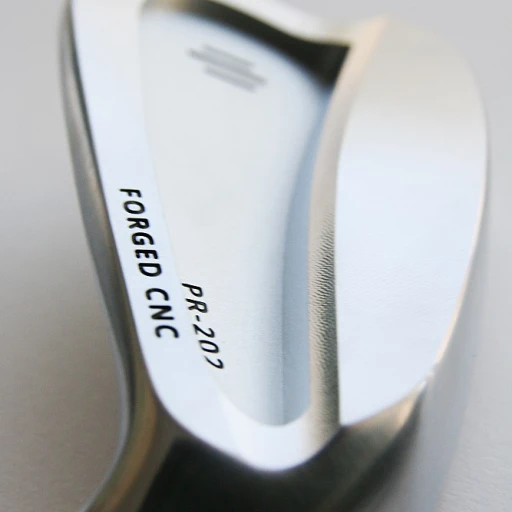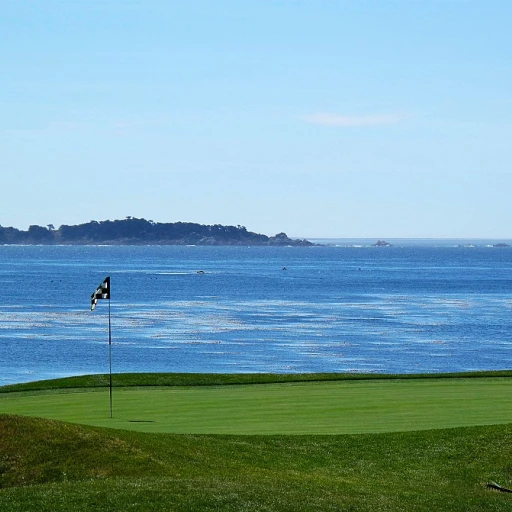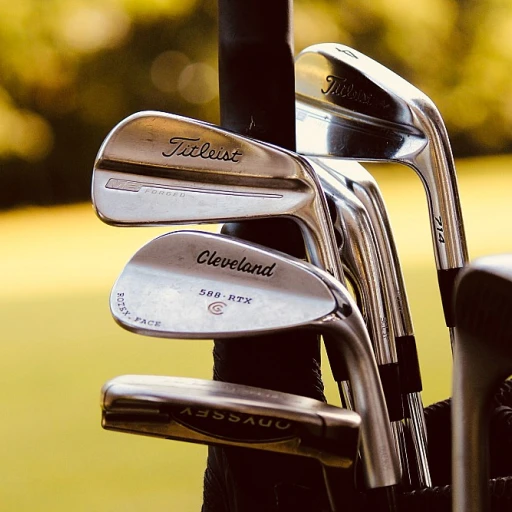The Art of Golf Course Logos
Masterpieces on the Green
In the world of luxury golf, the artistry of golf course logos is a fascinating element that often captivates enthusiasts and connoisseurs alike. These logos, more than just symbols, serve as a representation of the golf course's identity, heritage, and design philosophy. Whether it's the swoosh of a golf club or the silhouette of a golf ball mid-swing, each element is meticulously crafted to capture attention and communicate essence.
A well-designed logo speaks volumes about a golf course. It hints at the experience one might have on the green, whether you're teeing off at the esteemed Merion Golf Club or enjoying a leisurely day at the renowned Myrtle Beach. Crafting these logos involves strategic design elements that blend tradition and modern aesthetics, often drawing inspiration from iconic courses like Fishers Island and Bandon Dunes.
Luxury golf course logos are not only about visual appeal but also about preserving legacy. These symbols stand as proud testament to years of golf traditions while also paving the way for contemporary sophistication. As more courses embrace cutting-edge design trends, the challenge remains in balancing innovation with time-honored elegance.
To delve deeper into understanding how these iconic symbols are tied to luxurious courses, exploring the investment involved in building a luxury golf course sheds light on how branding elements, like a club logo, are cultivated as part of the overall course design strategy. Learn more about the art of golf logos and how they help maintain the allure of a golf course by reviewing
this insightful article that explores the factors influencing the creation of these revered symbols.
Iconic Logos in the Golf World
Timeless Crests and Visual Identities
When it comes to iconic logos in the golf world, certain course crests stand out not just as identifiers, but as symbols steeped in a rich tapestry of tradition and prestige. These logos serve as more than mere emblems; they encapsulate the storied history and values of their respective clubs and courses. With some, a single glance evokes the legacy of a legendary swing, the rolling fairways of past tournaments, or the serenity of a coastal backdrop.
The classic logo of Merion Golf Club, for instance, effortlessly combines simplicity with elegance, using minimalist design elements that reflect both the symmetry of its courses and the sophistication of its membership. Similarly, the understated charm of the Fishers Island Golf Club logo captures the scenic beauty of its seaside location while subtly nodding to its exclusive, secluded appeal.
Myrtle Beach is another standout, with its vibrant representation of the golfing atmosphere found along its renowned coastlines. Its logo balances modern flair with a nod to its reputation as a golf paradise, cleverly adding character to its versatile role as part of the area's identity. These designs aren't just favorites amongst club members; they resonate far beyond the sand traps and greens.
At Sleepy Hollow Country Club, the logo conjures imagery of leisurely afternoon rounds enjoyed amidst historic grounds. These visual markers narrate the club's story—one where history meets leisure. The iconic 'fried egg' motif associated with Bandon Dunes, on the other hand, adds a playful yet meaningful twist, relating directly to the common golfing mishap, cleverly integrating a relatable theme into its club logo.
Each of these emblematic designs achieves something unique; they save the courses' rich legacies from obscurity while generating appeal that transcends generations, creating symbols that are timeless. For those interested in diving deeper into the design intricacies and evolution of golf course logos, exploring opportunities in premium golf course ownership may offer fascinating insights into how these iconic images impact brand prestige and club allure. These nuances in golf branding provide a narrative as compelling as the courses themselves, illustrating how deeply ingrained these symbols are in the fabric of the sport.
Design Elements of Luxury Golf Logos
Decoding the Elements of Distinguished Golf Logos
In the realm of luxury golf, the essence of a golf course is elegantly captured in its logo. These designs go beyond mere aesthetics; they embody the spirit and standing of the club itself. When designing a logo, clubs aim to encapsulate the core values and prestige they represent. A well-crafted logo can save a club's reputation from being misunderstood, while adding immeasurable value.
Luxury golf course logos consistently feature several refined design elements:
- Simplicity and Elegance: Many of the best logos employ minimalist design, such as the emblem of Sleepy Hollow or the subtle elegance of Fishers Island. This approach aids in creating a clean, memorable image that stands the test of time.
- Symbolic Imagery: Incorporating symbols like the golf ball or club swing into the logo fosters identification with the sport, which can be found in the recognizable logos of Bandon Dunes and Merion Golf Club.
- Color Palette: Classic color schemes help set the tone. The navy blues and hunter greens often seen communicate both a connection to nature and an air of tradition.
For those particularly interested in elevating their club's brand, a deeper understanding of
exclusive golf simulator memberships offers insights into enhancing a club's identity through experiences, which can be reflected in a robust logo design.
Moreover, the legacy of golf is continually evolving with modern tendencies leaning towards incorporating contemporary trends while respecting tradition. Brands understand the importance of "less is more" in their modern designs, aligning with the trend of minimalism seen in today's most revered logos. The integration of these elements forms a cohesive identity that speaks volumes, ensuring these designs remain favorites for years to come.
The Role of Tradition in Golf Logos
The Enduring Influence of Tradition in Golf Logos
In the world of golf, tradition plays an indelible role in shaping the identity of clubs and courses. Many golf logos, especially those of prestigious country clubs and famed courses, draw inspiration from their storied histories. This reverence for the past is discernible in design elements that give a nod to the rich heritage of the sport.
Tradition in golf logos often manifests through classic symbols such as the golf ball, club, and even the intricate swing of a golfer. These elements are not merely decorative but serve as a continuous link between past and present, reminding club members and visitors alike of the legacy they are a part of.
- Classic Symbols: Incorporating a well-placed golf ball or club can hint at elegance and enduring prestige, akin to the emblems seen at Merion Golf Club and other iconic venues.
- Heritage Colors: Many course logos stick to traditional palettes, favoring green, gold, and cream tones that echo the natural beauty of the fairways and greens, as evident in famous logos from Myrtle Beach or Sleepy Hollow.
For courses that have stood the test of time, including the historic Fishers Island or Bandon Dunes, tradition isn’t just respected; it is celebrated. These renowned courses manage to balance nostalgia with modernity, ensuring that their logos remain relevant while staying rooted in beloved customs that golfers worldwide have come to cherish.
Ultimately, the incorporation of traditional elements in golf logos not only preserves history but also assists clubs in maintaining their esteemed status, pledging an homage to the game’s gloried past. Such logos serve to connect the generations, making them perennial favorites among connoisseurs of logo design in the golf realm.
Modern Trends in Golf Course Branding
Embracing Contemporary Aesthetics in Golf Branding
In the ever-evolving landscape of golf course branding, modern trends are making their mark while maintaining the revered traditions of the sport. As more clubs seek to make their mark in the golf world, contemporary designs are increasingly spotlighted.
One of the prominent modern trends is the incorporation of minimalist designs. These designs aim to create a clean, straightforward aesthetic that resonates with today’s preference for simplicity. Whether it's the sleek lines of a disc golf logo or the subtle elegance found in the logos of clubs like Merion Golf Club and Sleepy Hollow, minimalism often becomes a preferred choice. This approach isn't just about the appeal but also about ensuring these logos sustain their relevance over time.
Moreover, many golf course logos now integrate elements reflective of their geographic or cultural surroundings. Courses located in iconic destinations like Myrtle Beach or Bandon Dunes often incorporate visual cues that hint at their stunning landscapes or regional landmarks. The Fishers Island logo, for instance, might play on its coastal setting, enhancing its unique identity in the sea of golf logos.
The trend towards dynamic and adaptive designs cannot be overlooked. With the increasing importance of digital presence, logos are being crafted to be flexible across various platforms—be it a golf ball, merchandise, or digital media. This shift is crucial as courses strive to save their branding footprint while remaining impactful and recognizable.
In conclusion, as courses strive to position themselves as favorites among discerning golfers, the infusion of modern design trends presents opportunities to balance contemporary appeal with timeless charm. Whether it's the incorporation of bold color schemes or the use of advanced graphic elements, the logos of today reflect a careful blend of innovation and tradition, creating a unique symbol for each club or course.
Creating a Timeless Golf Logo
Crafting a Perpetually Elegant Emblem
In the intricate world of creating luxury golf logos, achieving a timeless appeal is of paramount importance. Unlike fleeting trends that may come and go, a truly elegant golf course logo resonates with tradition while embracing modernity. This delicate balance sets apart the most revered golf destinations from the rest.
When designing your course's identity, the art of simplicity often triumphs. Minimalist design has the potential to convey the essence of a luxury golf experience through sleek, uncomplicated elements. This does not only save the logo from becoming overly complex, it also ensures adaptability in various contexts—whether it adorns merchandise like golf balls or is proudly displayed at the entrance of a prestigious country club.
Moreover, the best golf logos find a way to integrate elements of local heritage or natural beauty. Take, for example, Fishers Island or Merion. These logos capture the spirit of their courses, creating a unique sense of place. Similarly, Myrtle Beach courses might incorporate coastal motifs, offering a nod to their seaside environment.
The role of color is another key consideration. Luxurious golf logos often opt for a muted, sophisticated palette. However, adding a vibrant touch can bring a modern twist, making the logo unforgettable without losing its classic allure.
Equally essential in logo design is adaptability. Whether your course is hosting a high-profile tournament or simply being featured in a golfing magazine, the logo should maintain its integrity across different mediums and scales. It is this versatility that ensures the logo remains a favorite, as recognized and revered decades down the line as it is today.
In keeping with the evolving trends of the modern golf landscape, enduring logos strike a harmonious chord between tradition and contemporary flair. Grounded in historical appreciation yet open to future possibilities, they etch an indelible mark on the golf world—much like the best swings at Sleepy Hollow or the signature courses at Bandon Dunes.














